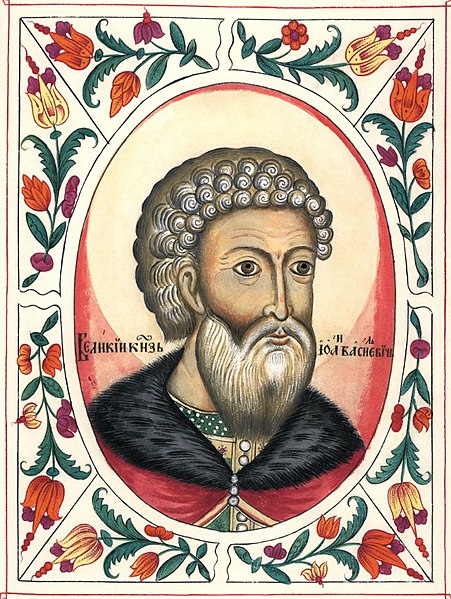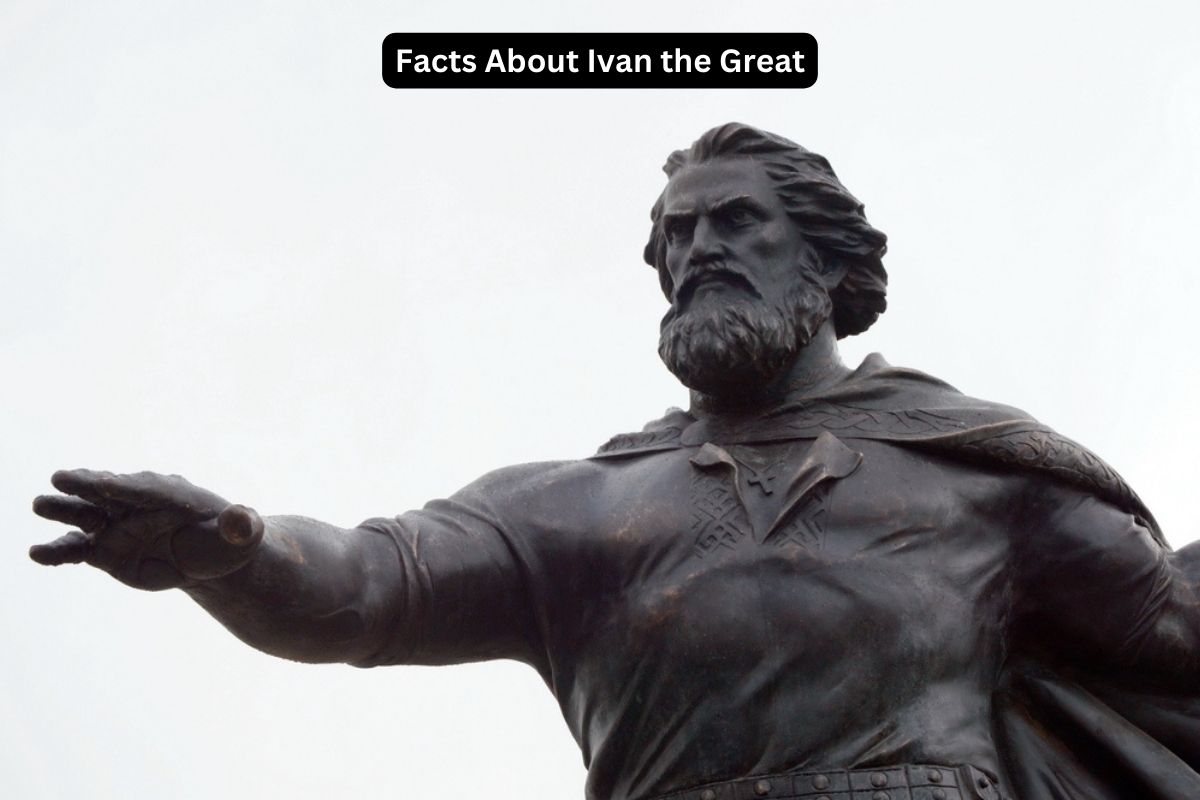In Russian history, few figures loom as large as Ivan III, known as Ivan the Great. His reign during the late 15th century marked a transformative period for Russia, characterized by territorial expansion, political consolidation, and the establishment of autocratic rule.
Through a combination of military prowess, strategic alliances, and visionary leadership, Ivan III elevated Moscow from a regional power to the center of a burgeoning Russian state.
This article explores the life and legacy of Ivan the Great, examining his role in shaping the foundations of Russian power and governance that endured for centuries to come.
From breaking free from Mongol domination to constructing the iconic Kremlin, Ivan’s contributions reverberate throughout Russian history, leaving an indelible mark on the nation’s identity and trajectory.
Ivan the Great Facts
1. Ivan III, also known as Ivan the Great, ruled Moscow from 1462 to 1505.
Ivan III, commonly known as Ivan the Great, assumed the throne of Moscow in 1462, marking the beginning of a transformative period in Russian history.
Also Read: Accomplishments of Ivan the Great
As the Grand Prince of Moscow, Ivan’s reign was characterized by his efforts to consolidate power and assert Moscow’s independence from the Mongol-dominated Golden Horde, which had previously held sway over Russian principalities.
Under his leadership, Moscow emerged as a formidable political force in the region.

2. He ended Mongol control over Russian lands
Ivan’s most significant achievement was breaking the yoke of Mongol rule over Russian lands. By skillfully navigating diplomatic relations and employing military strategies, he successfully freed Moscow from the vassalage to the Golden Horde, effectively ending their control over Russian territories.
This pivotal moment allowed Ivan to establish Moscow as the preeminent power in Russia and laid the groundwork for the country’s eventual expansion and unification.
3. Ivan centralized power in Moscow, diminishing the influence of regional princes
Centralization of power was a cornerstone of Ivan’s rule. He sought to strengthen the authority of the Grand Prince by consolidating power in Moscow and diminishing the influence of regional princes and boyars (nobles).
Also Read: Russian History Timeline
Through a series of administrative reforms and strategic alliances, Ivan centralized governance, bringing various Russian territories under the direct control of Moscow. This centralization not only stabilized the realm but also laid the foundation for the emergence of a unified Russian state.
4. He married Sophia Paleologue, a Byzantine princess, enhancing his legitimacy
Ivan the Great’s marriage to Sophia Paleologue, a Byzantine princess, was a significant political maneuver that bolstered his legitimacy and elevated the prestige of the Muscovite state.
By marrying into the illustrious Byzantine imperial family, Ivan solidified Moscow’s claim to the legacy of the Eastern Roman Empire.
Sophia brought with her cultural influence and connections to influential European courts, which enhanced Moscow’s standing among other European powers. This marriage not only strengthened Ivan’s position domestically but also bolstered Moscow’s diplomatic relations on the international stage.

5. Ivan initiated the construction of the Kremlin
The construction of the Kremlin under Ivan III’s reign marked a pivotal moment in the architectural and political landscape of Moscow.
The Kremlin, a fortified complex located at the heart of the city, served as the residence of the Russian rulers and the administrative center of the Muscovite state. Ivan initiated the construction of the Kremlin as a symbol of Moscow’s growing power and as a means of fortifying the city against external threats.
Over time, the Kremlin became synonymous with Russian governance, housing key governmental institutions, religious buildings, and cultural artifacts. Its construction represented Ivan’s vision of Moscow as the political and spiritual capital of Russia.
6. He expanded Russian territory through military conquests
Ivan the Great’s military campaigns expanded Russian territory and solidified Moscow’s dominance over neighboring regions. Through a combination of strategic alliances, military conquests, and diplomatic maneuvers, Ivan extended Muscovy’s borders, annexing territories such as Novgorod and Tver.
These conquests not only increased the size of the Muscovite state but also enhanced its economic resources and geopolitical influence. Ivan’s expansionist policies laid the foundation for the later territorial growth of the Russian Empire and established Moscow as the foremost power in the region.
These conquests also facilitated the spread of Russian culture and Orthodox Christianity to newly acquired territories, further cementing Moscow’s influence over the Russian lands.
7. Ivan established autocratic rule, concentrating power in the ruler’s hands
Ivan the Great’s reign marked a pivotal moment in Russian political development, characterized by the establishment of autocratic rule. Central to this system was the concentration of power in the hands of the Grand Prince, with Ivan wielding unprecedented authority over the affairs of state.
This autocratic model of governance enabled Ivan to exert control over regional princes and nobles, ensuring stability and unity within the realm.
The consolidation of power in Moscow under Ivan’s leadership laid the foundation for centuries of centralized rule in Russia, shaping the country’s political trajectory and institutions.

8. His reign saw the transition to a unified and centralized Russian state
During Ivan the Great’s reign, Russia underwent a profound transformation, transitioning from a fragmented collection of principalities to a unified and centralized state. Ivan’s strategic military campaigns, diplomatic maneuvers, and administrative reforms played instrumental roles in this process.
By annexing territories, consolidating power in Moscow, and asserting authority over regional princes, Ivan laid the groundwork for a cohesive and centralized Russian state. This transition fostered greater stability, unity, and efficiency in governance, paving the way for Russia’s emergence as a major European power in the centuries that followed.
Ivan the Great’s reign marks a critical juncture in Russian history, shaping the trajectory of the nation and laying the foundations for its future expansion and influence on the world stage.
9. Moscow became the political, economic, and cultural center of Russia
Ivan the Great’s initiative to construct the Kremlin in Moscow was not merely a defensive measure but also a symbol of the burgeoning power and significance of the Muscovite state. The Kremlin, with its imposing walls and towers, served as a fortress to protect the city’s rulers and inhabitants from external threats.
However, beyond its defensive function, the Kremlin also became the epicenter of political, religious, and cultural life in Russia. Its architectural grandeur and strategic location at the confluence of rivers underscored Moscow’s status as the capital of the growing Russian state.
10. Ivan’s legacy laid the foundation for the later Russian Empire
Ivan’s legacy as a transformative figure in Russian history extends beyond his lifetime, laying the groundwork for the emergence of the Russian Empire. His reign witnessed the consolidation of Moscow’s political and cultural dominance, the expansion of Russian territory, and the establishment of autocratic governance.
These developments set Russia on a trajectory toward becoming a formidable European power, with Moscow as its political and cultural nucleus. Ivan the Great’s contributions to Russian state-building and nationhood endure as a defining chapter in the country’s history, shaping its identity and geopolitical landscape for centuries to come.
